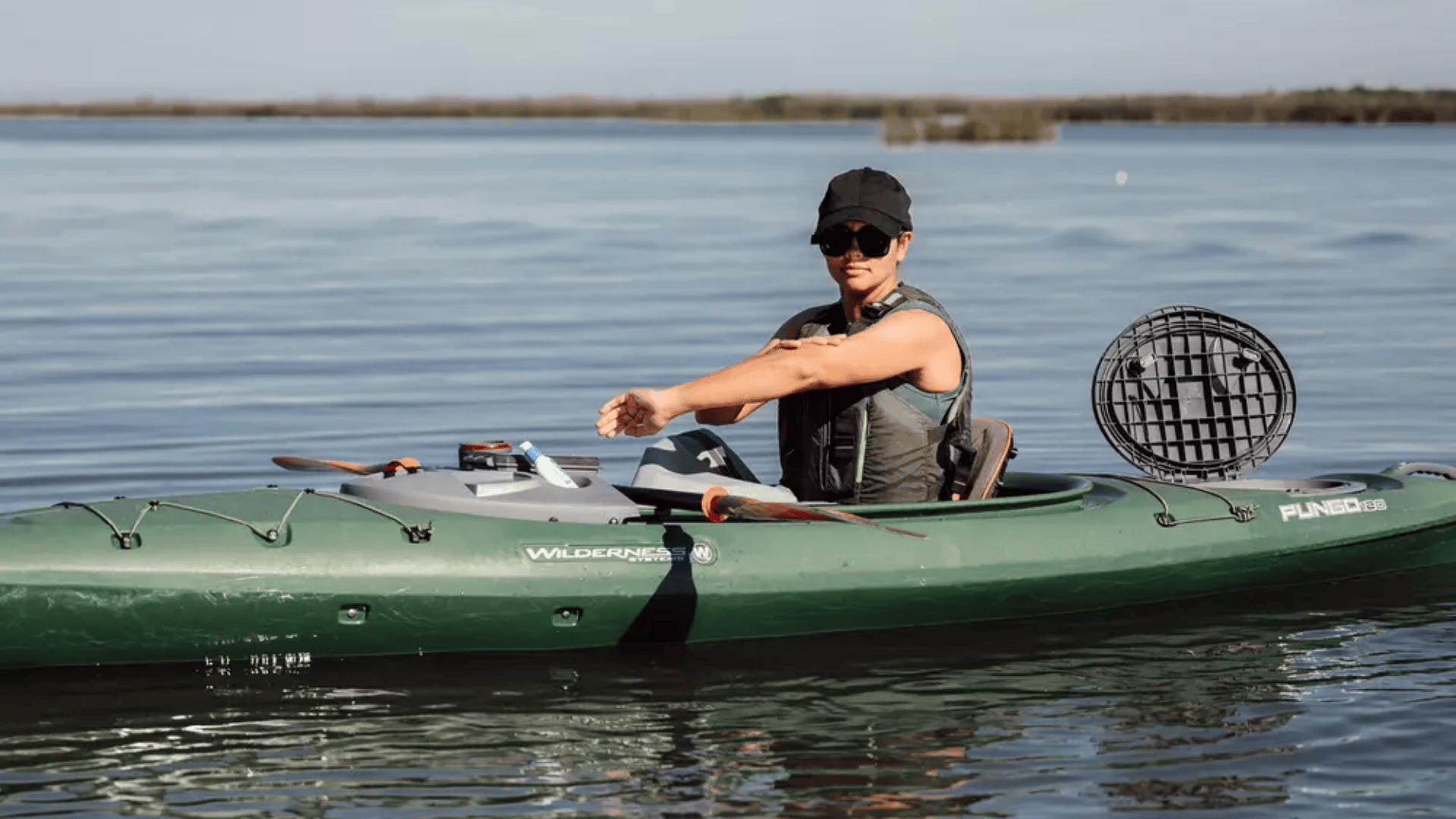Finding the right fishing kayak can make your time on the water more enjoyable.
For anglers, stability isn’t just a nice feature; it’s the difference between confidently casting, reeling in big catches, or spending the day fighting to keep balance.
Industry reports suggest that more than half of kayak fishing mishaps stem from poor stability, especially when standing or handling gear.
Thankfully, modern kayak designs have evolved to feature wider beams, specialized hulls, and standing platforms, making it easier than ever to stay steady.
If you’re a beginner learning the ropes or an experienced angler chasing trophy fish, stability is the foundation of a safer, more enjoyable trip.
How Modern Fishing Kayaks Have Changed Fishing
The evolution of fishing kayaks has reshaped the sport. Early models were simple, best suited for calm waters and minimal gear.
Today’s kayaks are wider, more stable, and designed for anglers who want to stand, cast, and fight fish with confidence.
Advancements such as pedal drives, gear tracks, and integrated storage have made fishing more efficient, while lighter materials and improved hulls enable access to shallow waters that larger boats can’t reach.
These changes haven’t just made kayaks safer and more comfortable; they’ve also expanded what’s possible on the water.
Fishing Environment Factors
The water you fish in determines the stability you need. Match your kayak’s design to the conditions for safer trips.
- Calm Lakes: Almost any stable kayak is suitable for use in protected, still waters.
- Rivers: Secondary stability helps handle current, rocks, and obstacles.
- Coastal Waters: Strong stability and tracking keep you steady in wind and waves.
- Standing & Casting: Wide hulls offer maximum balance for anglers who prefer to stand.
Choosing stability features suited to your environment ensures comfort, confidence, and better performance every time you’re on the water.
Top Stable Fishing Kayak Recommendations
Here are the top picks across different categories and budgets:
1. Best Overall Stability: Lifetime Manta Angler 10′
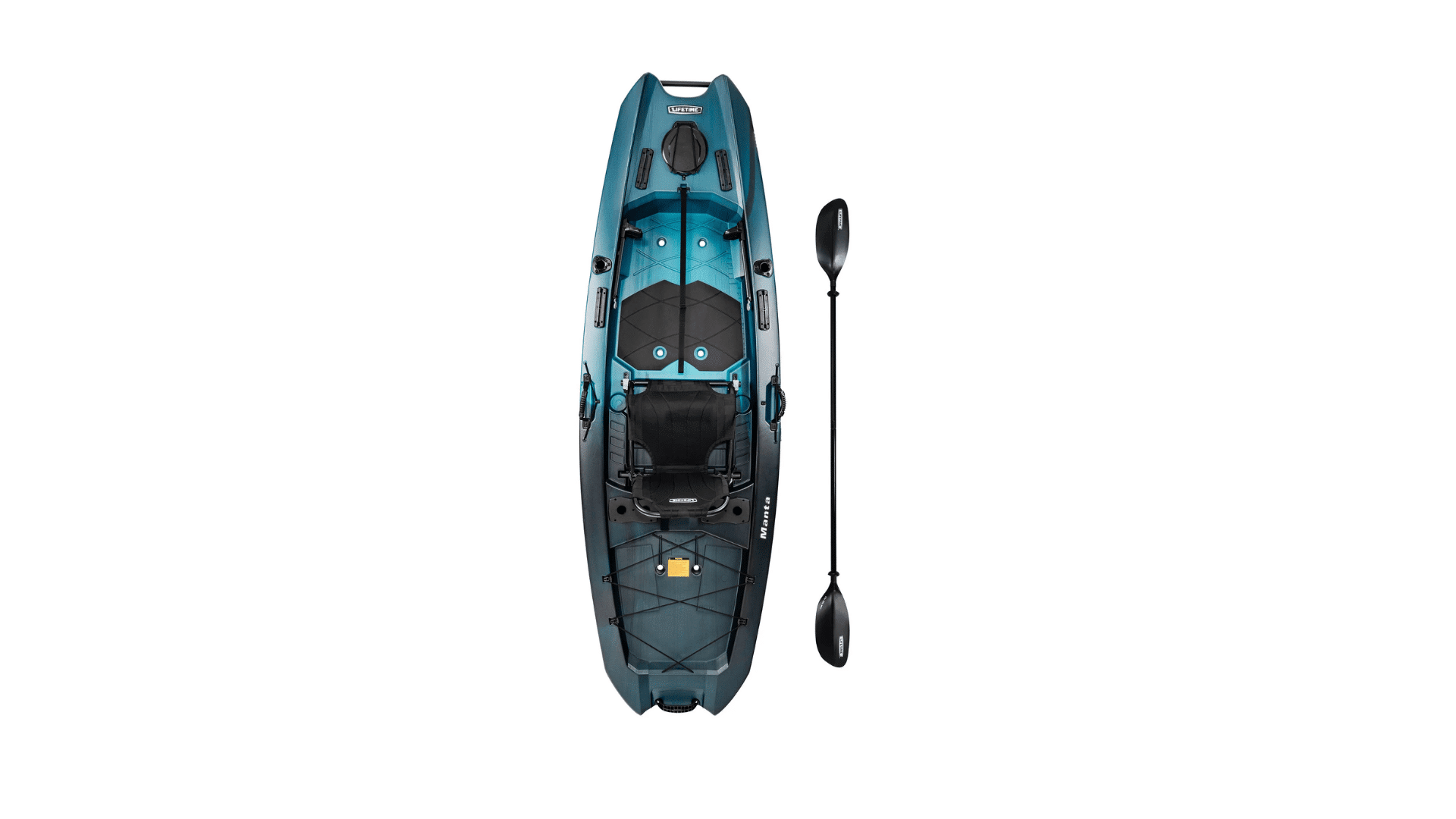
This catamaran-hull kayak offers outstanding standing stability.
The twin-hull design creates an incredibly stable platform that’s perfect for beginners and experienced anglers who want confidence while standing.
Key Features:
- 10-foot length with 36-inch beam
- 275-pound weight capacity
- Multiple rod holders and storage areas
- Adjustable padded seat
- Price range: $400-500
Pros: Excellent stability, affordable price, good storage
Cons: Slower than single-hull designs, heavier to transport
2. Best Budget Option: Pelican Sentinel 100X
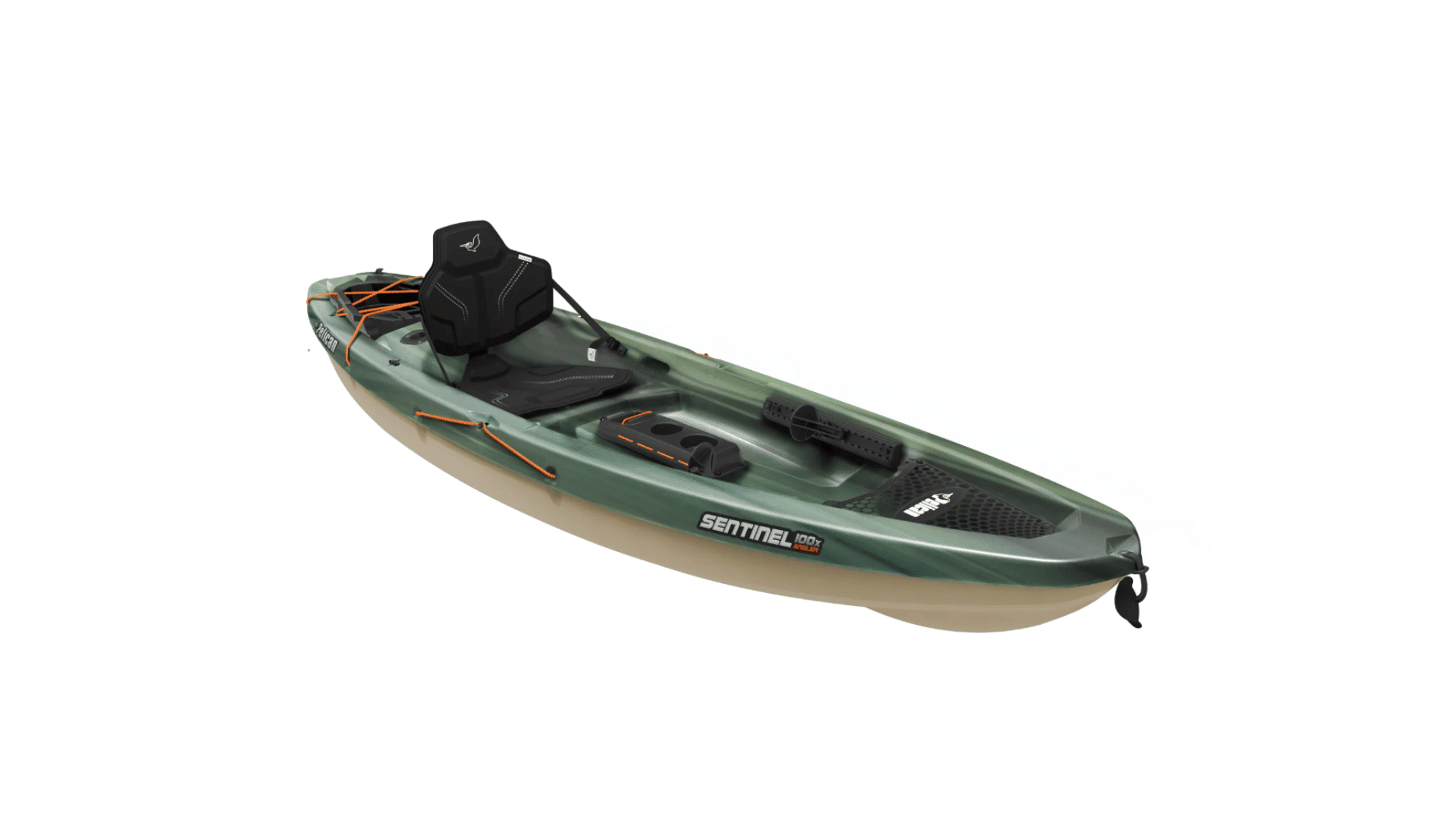
For anglers on a tight budget, this sit-on-top kayak provides solid stability without breaking the bank.
It’s a great entry-level option that doesn’t sacrifice safety for price.
Key Features:
- 10-foot length with 30-inch beam
- 275-pound capacity
- Built-in storage compartments
- Comfortable seating
- Price range: $300-400
Pros: Affordable, lightweight, stable for the price
Cons: Less storage than premium models, basic features
3. Best for Stand-Up Fishing: Pelican Catch Mode 110

The tunnel hull design makes this kayak exceptionally stable for standing while maintaining reasonable tracking ability.
It’s built specifically for anglers who want to stand and cast.
Key Features:
- 11-foot length with 33-inch beam
- 325-pound capacity
- Standing-friendly deck layout
- Multiple storage options
- Price range: $500-650
Pros: Great for standing, good tracking, quality construction
Cons: Higher price point, heavier than some alternatives
4. Best Pedal Drive Stability: Wilderness Systems ATAK 120
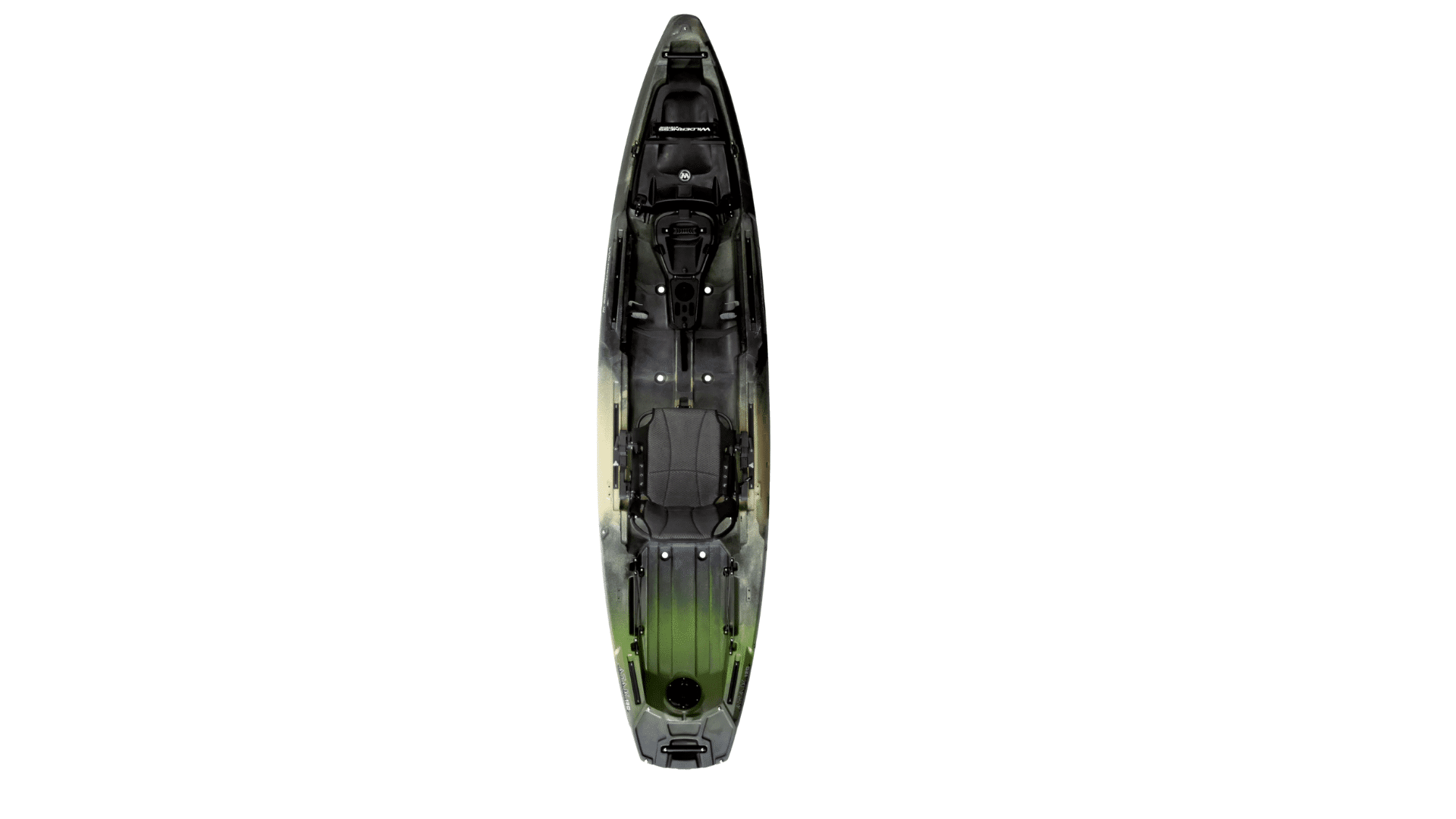
For anglers who want hands-free propulsion, this pedal-drive kayak combines stability with the convenience of pedal power. The wide beam and well-designed hull provide stability while pedaling.
Key Features:
- 12-foot length with 33-inch beam
- 375-pound capacity
- Pedal drive system
- Premium seating and storage
- Price range: $1,800-2,200
Pros: Hands-free fishing, excellent build quality, very stable
Cons: High price, requires more maintenance
5. Best for Heavy Anglers: Lifetime Triton Angler 100
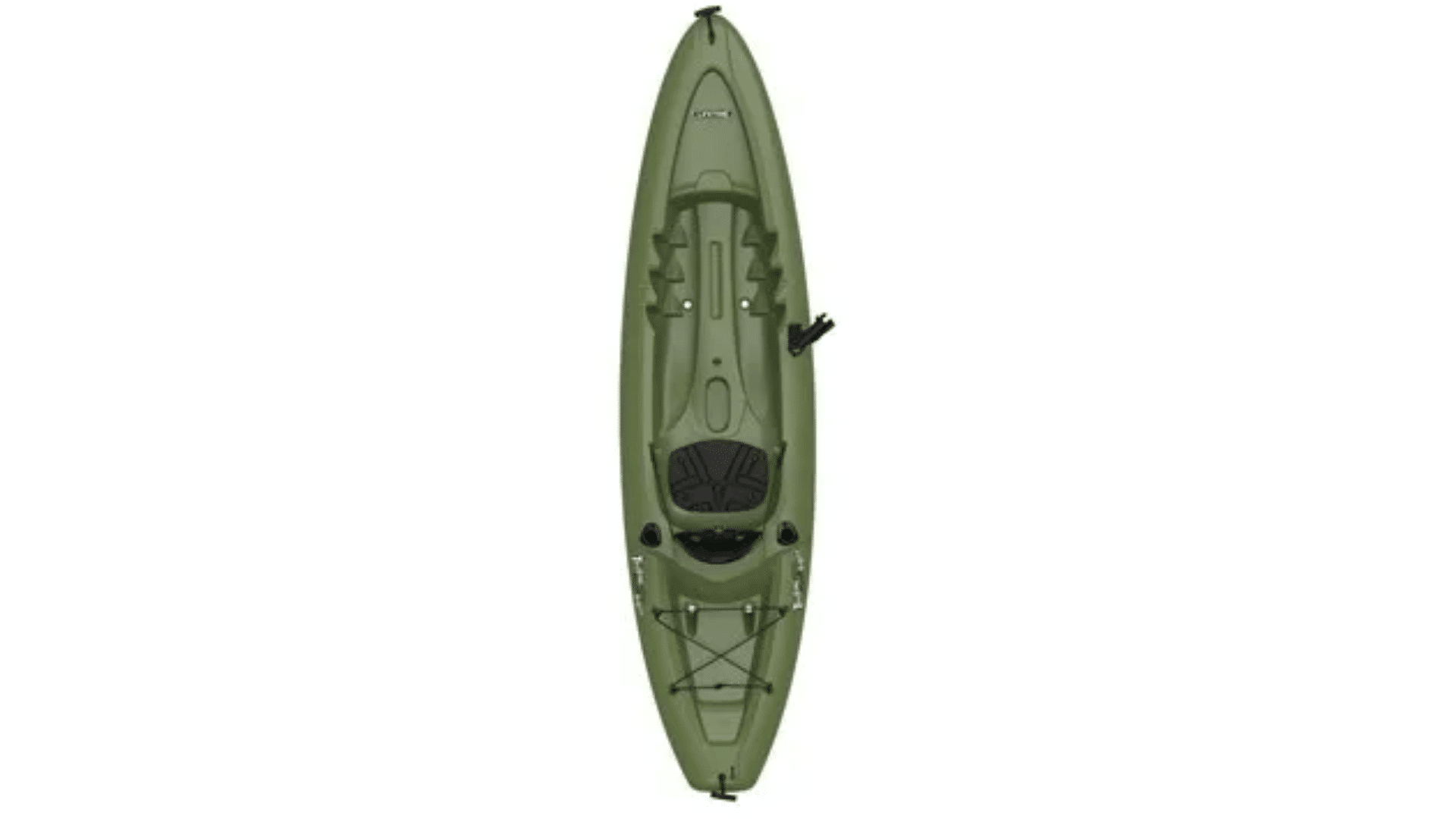
Larger anglers need kayaks with higher weight capacity and dependable stability. The Triton Angler 100 is designed to support heavier loads while still maintaining balance and comfort on the water.
Key Features:
- 10-foot length with 31-inch beam
- 275-pound weight capacity
- Multiple rod holders for convenience
- Ample storage areas for gear
- Price range: $400–500
Pros: Stable design, affordable value, lightweight for transport
Cons: Lower capacity than some 12-foot models, fewer premium features
User Categories and Needs

Different anglers need different stability features based on their experience and fishing style.
1. Beginning Kayak Anglers
New kayakers benefit most from maximum stability. Wide, flat-bottom kayaks work well for learning basic paddling and fishing techniques.
Look for models with good primary stability that feel solid and predictable.
2. Intermediate Fishermen
More experienced paddlers can handle kayaks with moderate stability that offer better speed and maneuverability.
These kayaks often have slightly narrower beams, but they still provide confidence in most fishing situations.
3. Advanced Anglers
Experienced kayak fishermen often prefer kayaks that strike a balance between stability and performance.
They can handle kayaks that might feel tippy to beginners but offer better tracking and speed for covering more water.
Price Ranges and Value
Fishing kayaks come in different price tiers, and knowing what each range offers helps anglers choose the right stability, comfort, and performance.
| Tier | Price | Key Features | Best For |
|---|---|---|---|
| Budget | $300–600 | Basic sit-on-top, solid stability, limited extras | Beginners |
| Mid-Range | $600–1,200 | Better seats, storage, and improved hulls | Regular anglers |
| Premium | $1,200+ | Pedal drives, advanced hulls, premium build | Serious anglers |
Selecting the right tier ensures balance between cost, stability, and features, giving anglers confidence and value without overspending on unnecessary upgrades.
What Makes a Fishing Kayak Stable?
Stability is the foundation of a safe and enjoyable fishing experience.
From hull shape to seating, several design factors determine how steady a kayak feels on the water. Understanding these elements helps you choose the right model for your fishing style.
1. Hull Design Types
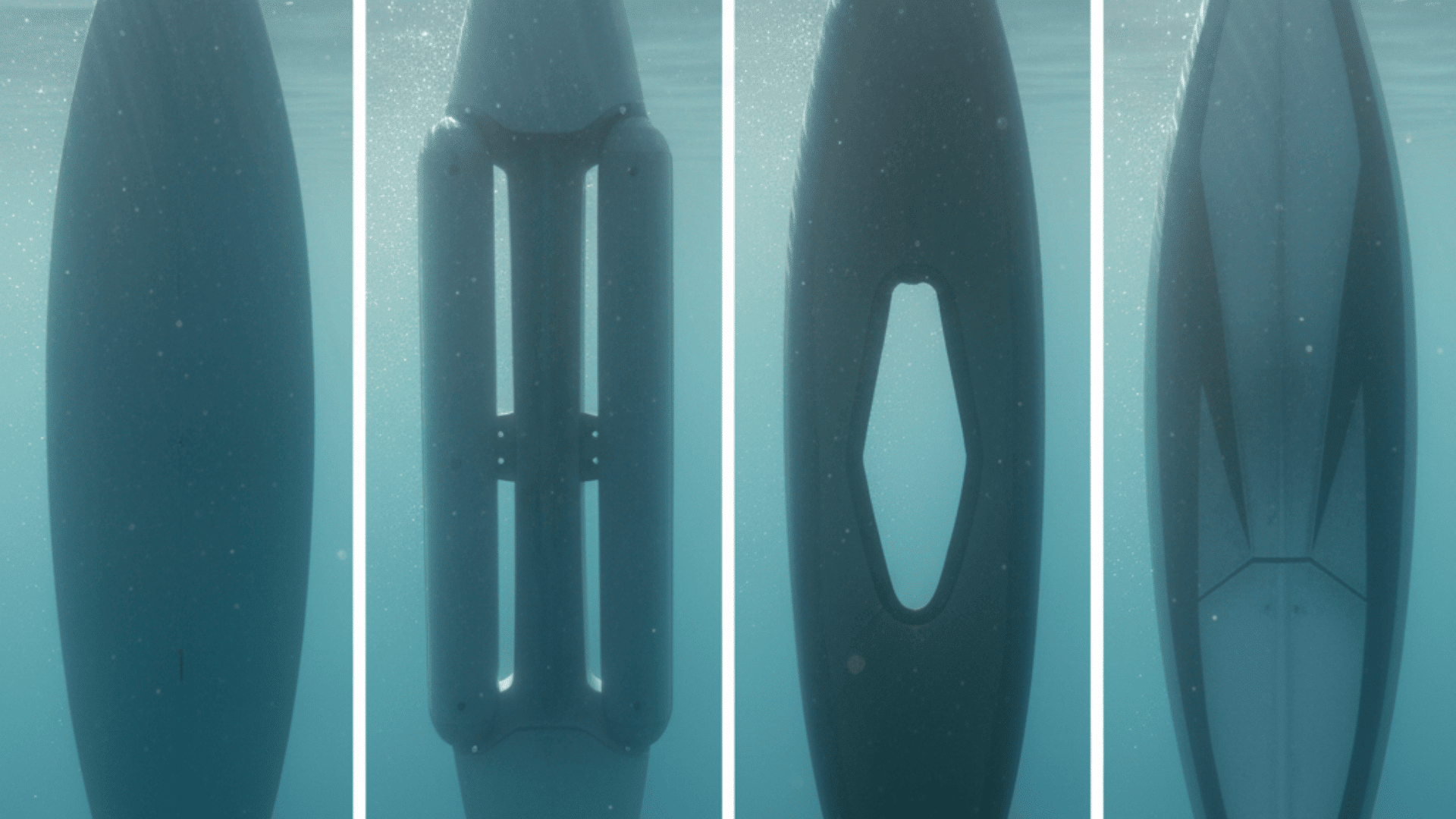
The hull shape has the biggest impact on stability. Flat bottoms provide perfect steadiness in calm water but can feel less secure in waves.
Pontoon hulls are wider and offer superior balance for standing and casting. Tunnel hulls combine balance with better tracking, while multi-chine hulls add more surface contact for overall stability.
2. Width and Length Balance
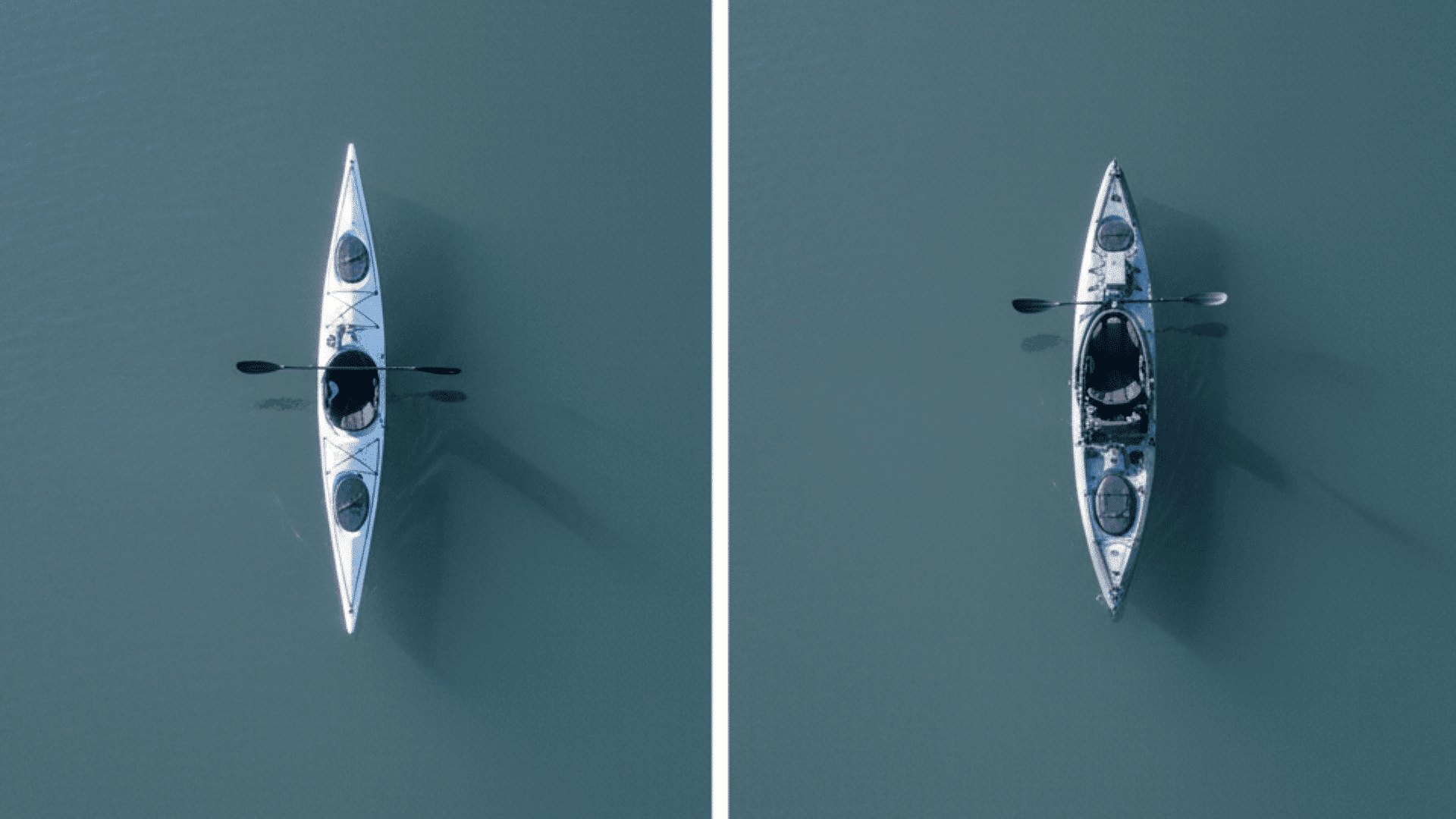
Wider kayaks, generally 32 to 36 inches, deliver greater stability but move more slowly through the water.
Longer kayaks track straighter, making them efficient for distance, though they are less maneuverable. A balance of width and length is often the best choice for most fishing situations.
3. Weight Capacity Considerations
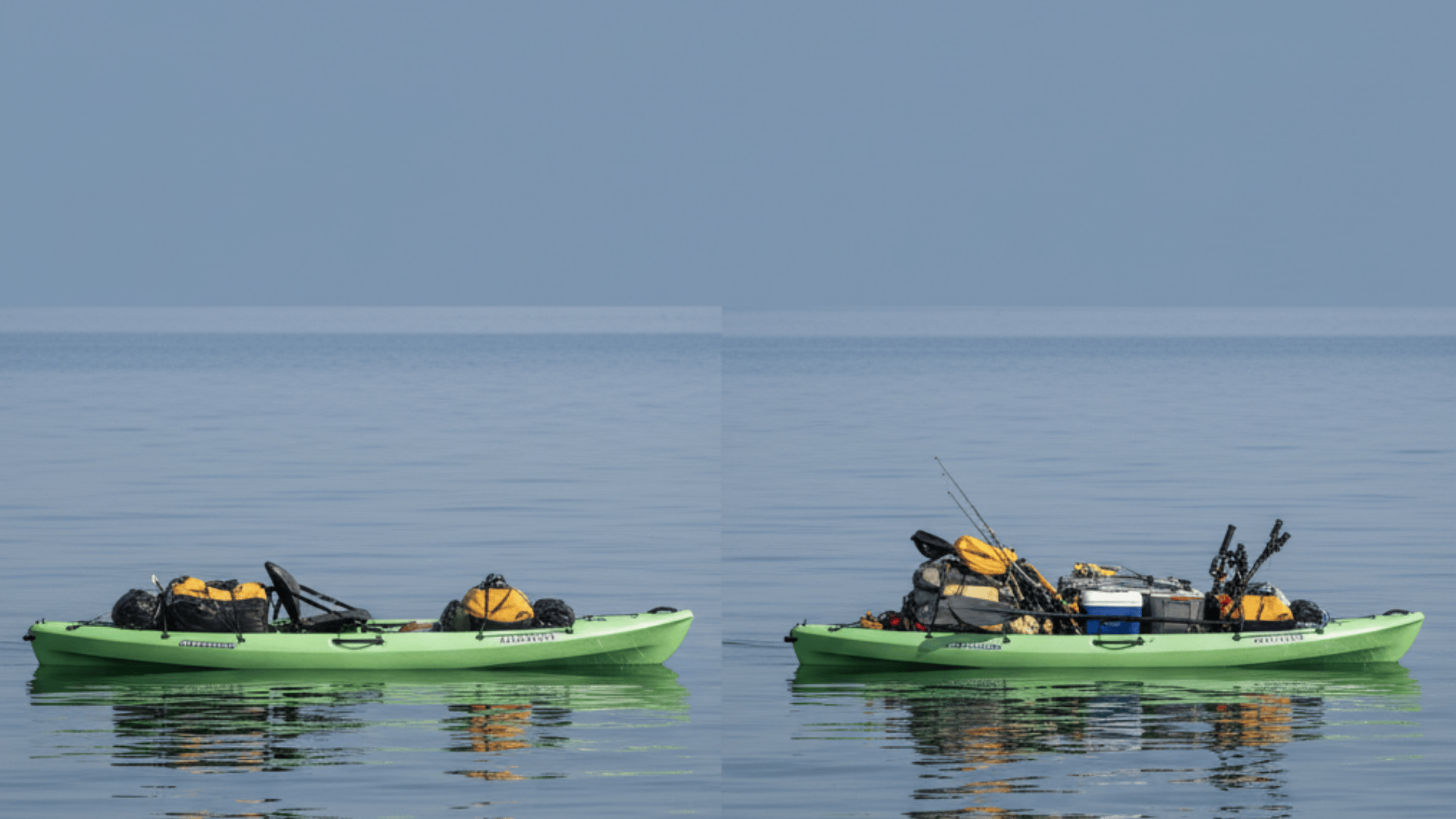
A higher weight capacity keeps the kayak riding higher and steadier when loaded with gear.
It’s best to choose a model that supports at least 100 pounds more than your body weight, plus any equipment you plan to use. This extra margin helps prevent tipping and maintains balance on extended trips.
4. Material Quality
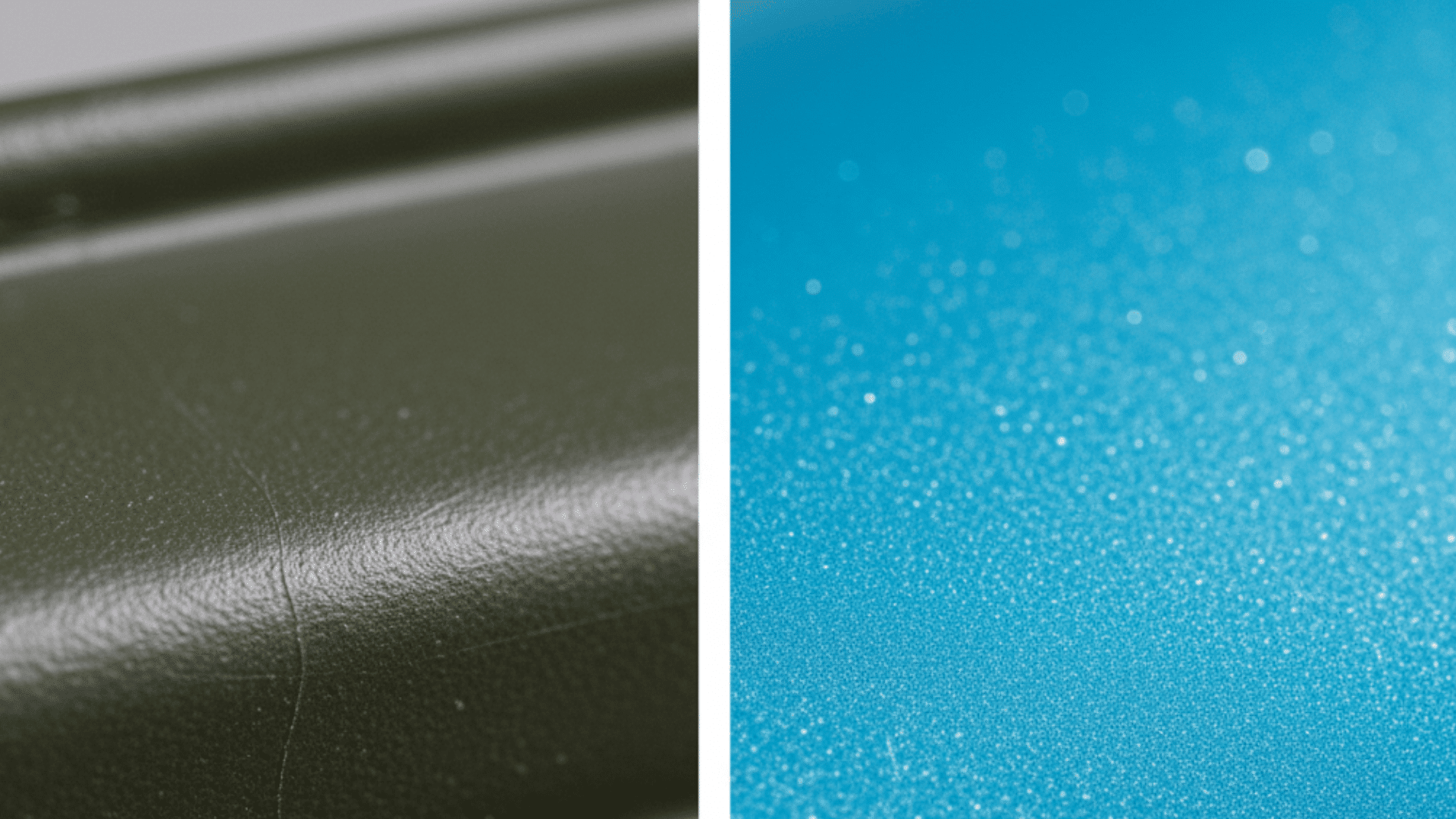
Most fishing kayaks are made from rotomolded polyethylene, a durable and impact-resistant material.
Higher-end options may use thermoformed plastic or composites that are lighter and easier to transport, but they usually come at a higher cost. The material affects both performance and long-term durability.
Maintenance for Long-Term Stability
Consistent maintenance ensures your fishing kayak remains stable, safe, and durable. Proper care protects performance and extends your kayak’s lifespan.
- Hull Care: Keep the hull clean and inspect regularly for cracks or damage that could compromise long-term stability.
- Hardware Maintenance: Regularly check rudders, skegs, and pedal systems, as these components directly impact tracking, maneuverability, and stability.
- Storage Tips: Store your kayak in a shaded, dry area to prevent warping, fading, and sun damage that can affect its stability.
- Weight Distribution: Distribute gear evenly, keeping heavier items low and centered to maintain balance and reduce tipping risk.
Regular upkeep ensures reliable performance, keeping your fishing kayak stable, balanced, and safe for many seasons of enjoyable angling adventures.
Final Thoughts
Stability defines the difference between worrying about balance and fully enjoying time on the water.
A kayak that feels solid under every cast or paddle stroke builds confidence, allowing focus on the catch instead of the conditions.
Choosing carefully, trying different designs, and understanding how stability works will help ensure safer, more enjoyable outings.
Think of the decision not just as buying gear but as investing in years of memorable fishing experiences.
Take your time, research the options, and choose a kayak that feels right for you. Ready to start your search? Compare models and test one firsthand.
Common Questions About Stable Fishing Kayaks
Is Wider Always More Stable?
Generally, yes, but hull shape matters more than width alone. A well-designed 32-inch kayak can feel more stable than a poorly designed 36-inch model.
How Much Width Do I Need?
Most anglers find kayaks between 32 and 34 inches wide provide good stability without sacrificing too much speed. Beginners might prefer 34+ inches.
Sit-On-Top vs. Sit-Inside for Stability?
Sit-on-top kayaks generally feel more stable because you sit higher and have more freedom to move. They’re also easier to re-enter if you fall out.
How Do I Handle Wind and Waves?
Use proper paddling technique, stay low when possible, and consider adding a skeg or rudder for better tracking in the wind.







